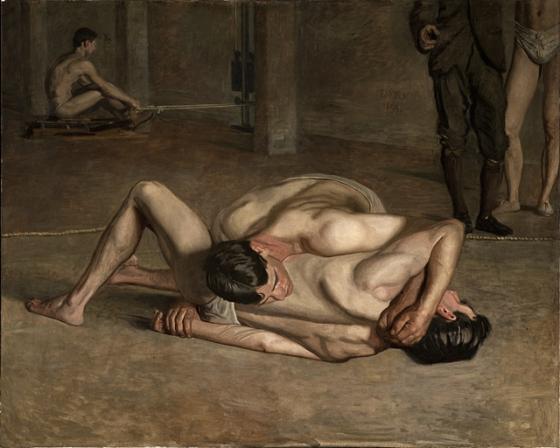One of the great American Realists, Thomas Eakins was devoted to the art of perfection. His work is born of an intense study of human anatomy, possessing a detailed and academic air that makes his work both rigid in its design and bewildering in its accuracy. Often, however, he sacrificed one perfection for the sake of another. Throughout Eakins’s body of work, the lighting and the denotations of movement are often bizarre, but the human figure is always painstakingly accurate.
Wrestlers marks Eakins’s final genre painting, athletic portrait, and study of the male body. The painting depicts what Eakins considered the most interesting pose his models attempted, but as the work developed, it took on characteristics beyond a mere study of movement and body. There is a depth and darkness to Wrestlers that is similarly reflected in sporting portraits by George Bellows—a vague commentary on the brutality of a spectator sport. The stance of the two wrestlers is not traditional, and the angle is harsh for the viewer, for we can see every twist of the muscle and every popping vein. While the work is magnificent, it also revels in the grotesque.
Wrestlers is currently on view on Level 3 of the Art of the Americas Building. Check out our new Artists on Art series to learn more about how this painting inspired photographer Catherine Opie.



